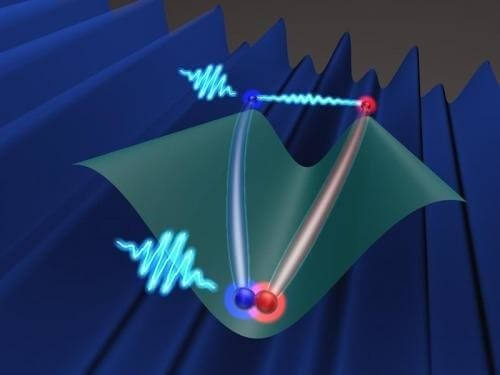This phase was discovered about 25 years ago by Prof. Yehoshua Zak of the Technion and is named after him - "Zak Phase"

German and American researchers were able to measure the Zack silver, which was discovered 25 years ago by Professor Yehoshua Zack of the Technion. This is what articles in the prestigious journals "Nature Physics" (Nature Physics) and "Science" (Science) reveal.
In 1989, Professor Zak published an article in the scientific journal "Physical Review Letters" in which he fitted a geometric phase to solids. The solid material has energy bands and the electrons in them gain acceleration when an electric field is applied to them. In their movement, they acquire a geometric phase (for example, the angle of the swing rope with the vertical, is the phase of the swing). This phase that the electrons receive was discovered by Professor Zak.
Geometric phases occur in different places in nature. One of the simple examples is Foucault's pendulum: a tall pendulum that can swing in any vertical plane. Because of the Earth's rotation, the plane in which it swings rotates relative to the Earth. Every day the plane of rotation changes by a small 'geometric' angle, related to the spherical structure of the earth. In optics, the famous Indian scientist Panchartanam first discovered geometric phase in 1956
Pancharatnam. Shivaramakrishnan. In quantum mechanics, there is a similar phenomenon that was discovered in 1984 by the British physicist Sir Michael Berry, who identified a geometric phase, and this is now known as the "Berry phase". Such quantum-mechanical phases may significantly affect the properties of matter and cause a variety of phenomena. Examples of this are the dielectric polarization and the quantum Hall effect (which is currently used to define a standard of resistance).
Now, for the first time, scientists in the group of Professor Emanuel Bloch (Ludwig-Maximilians University in Munich and the Max Planck Institute, Garching) in close cooperation with theoretical physicists from Harvard University, in the group of Prof. Yevgeny Daimler, have succeeded in measuring a topological phase in a one-dimensional system in a quasi-solid state (lattice optical). This is the phase called Zak-phase after Professor Yehoshua Zak from the Faculty of Physics at the Technion.
Two objects have a different topological structure if there is no continuous way to transform one of them into the other without cutting it or punching holes in it, for example, a tea cup with one hole in the handle is topologically equivalent to a mug, but a mug and a soccer ball are not the same. Moreover, it is possible to characterize the structures
The different topologies according to geometric structures related to the shape of the object. But what is the relationship between these geometric phases and the actual properties of the material? "In matter, the atoms are arranged in a way that creates a periodic structure, where the electrons are affected by the electric forces of the ions. As a result, the electrons 'move' inside the material in energy bands, which embody the role of the objects in the examples we presented and acquire a geometric phase," explains Marcus Atala, a senior doctoral student in the experiment in Prof. Emmanuel Bloch's group.
In 1989, Professor Zak identified the geometric phases in the band theory of one-dimensional solids. When a particle moves 'slowly' along the energy band and completes a complete loop, it "acquires" the geometric phase that significantly affects the properties of the material that can be determined by the "quantum geometry" of the crystal. Therefore, identifying the topological properties of the energy band is essential for understanding its physical properties.
According to researcher Emmanuel Bloch, this new measurement scheme is an examination of a new approach to the study of topological structures in solids, and it may lead to the discovery of topological phases in a quantum material that has unique properties that may be useful in practical applications.
"I was happy to hear that more than half a dozen researchers in the US and Germany collaborated and managed to measure the phase I predicted," says Professor Zak. "It is very important for a theorist who predicted a phenomenon that his theory is measured in an experiment. And this measurement turned my theory into reality."
In opening the phase, Prof. Zak used another discovery of his from 1967 - the presentation of kq (kq-representation). This is a fundamental discovery in quantum mechanics that is also named after him - "Zak Transform" and is used today in signal processing. Tens of thousands of engineers use it in their work.

2 תגובות
The genius store caldle, they're running out of you.
Are parquets applied, could these be in the Iter project? It was written about "energy strips". Maybe it had a use for nuclear fusion?